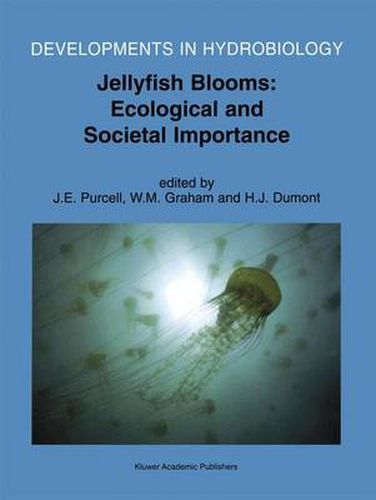Readings Newsletter
Become a Readings Member to make your shopping experience even easier.
Sign in or sign up for free!
You’re not far away from qualifying for FREE standard shipping within Australia
You’ve qualified for FREE standard shipping within Australia
The cart is loading…






Jellyfish, a group that includes scyphomedusae, hydromedusae, siphonophores and ctenophores, are important zooplankton predators throughout the world’s estuaries and oceans. These beautiful creatures have come to public attention as featured exhibits in aquaria and in news headlines as invaders and as providers of genes used in biomedical research. Nevertheless, jellyfish are generally considered to be nuisances because they interfere with human activities by stinging swimmers, clogging power plant intakes and nets of fishermen and fish farms, and competing with fish and eating fish eggs and larvae. There is concern that environmental changes such as global warming, eutrophication, and over-fishing may result in increased jellyfish populations. The literature reviews and research papers in this volume explore the interactions between jellyfish and humans. Papers cover: the medical aspects of jellyfish stings; jellyfish as human food and jellyfish fisheries; interactions of jellyfish and fish; effects of environmental changes on jellyfish; effects of introduced ctenophores on the Black Sea ecosystem; factors causing increases or concentrations of jellyfish; and others aspects of jellyfish ecology. This is an important reference for students and professional marine biologists, oceanographers, fishery scientists, and aquarists.
$9.00 standard shipping within Australia
FREE standard shipping within Australia for orders over $100.00
Express & International shipping calculated at checkout
Jellyfish, a group that includes scyphomedusae, hydromedusae, siphonophores and ctenophores, are important zooplankton predators throughout the world’s estuaries and oceans. These beautiful creatures have come to public attention as featured exhibits in aquaria and in news headlines as invaders and as providers of genes used in biomedical research. Nevertheless, jellyfish are generally considered to be nuisances because they interfere with human activities by stinging swimmers, clogging power plant intakes and nets of fishermen and fish farms, and competing with fish and eating fish eggs and larvae. There is concern that environmental changes such as global warming, eutrophication, and over-fishing may result in increased jellyfish populations. The literature reviews and research papers in this volume explore the interactions between jellyfish and humans. Papers cover: the medical aspects of jellyfish stings; jellyfish as human food and jellyfish fisheries; interactions of jellyfish and fish; effects of environmental changes on jellyfish; effects of introduced ctenophores on the Black Sea ecosystem; factors causing increases or concentrations of jellyfish; and others aspects of jellyfish ecology. This is an important reference for students and professional marine biologists, oceanographers, fishery scientists, and aquarists.